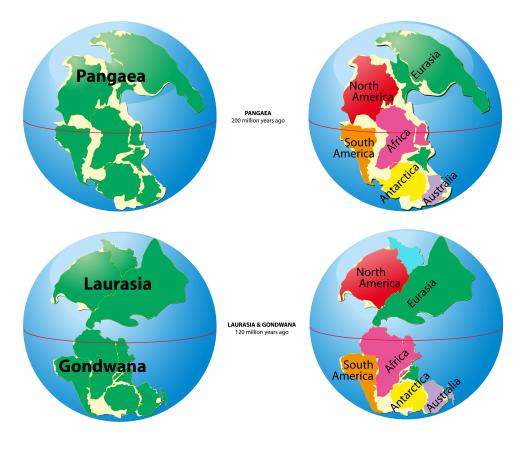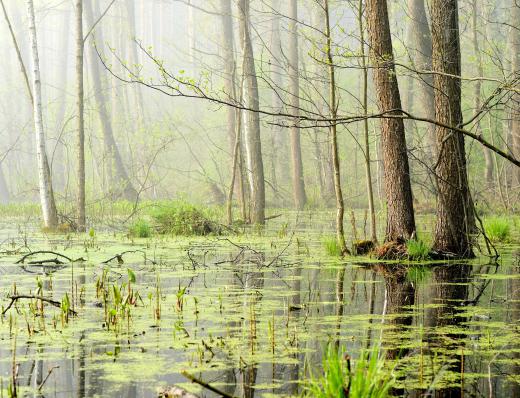When Was the Carboniferous Period?
 Michael Anissimov
Michael Anissimov
The Carboniferous Period (meaning "carbon-bearing") is a geological time period which lasted about 60 million years, between the Devonian period 340 million years ago (mya) and the Permian period 280 mya.
During the Carboniferous period swamps and forests flourished, producing an excess of atmospheric oxygen up to 80% higher than today's levels, and massive quantities of decaying organic matter. This organic matter eventually turned to coal after millions of years of pressure from the soil and rock above it, and is responsible for the existence of large coal deposits in England and Western Europe. These coal beds, originating from the Carboniferous period, fueled the first Industrial Revolution and continue to be mined for coal today.

The Carboniferous period was when the famous supercontinent Pangaea was formed, around 300-345 mya. It was formed when several smaller continents pushed into each other, giving rise to the Appalachians, the Atlas Mountains, and the Urals. Pangaea was so big that its center was very dry, but the coastal areas flourished with large and exotic flora and fauna. During the Carboniferous period, it was possible for animals to migrate all the way from the North Pole to the South Pole. The oxygen surplus due to floral overgrowth led to gigantism in certain amphibians and insects, including the biggest insect ever to evolve, an ancestor of the dragonfly, with a wingspan of 73cm (29 inches). Brachiopods were common during the Carboniferous period, and ancient species such as the trilobite began to die out.

The large carbonaceous deposits produced during the Carboniferous period were due to two main factors: the evolution of bark on trees in the form of the organic polymer lignin; and lower sea levels, permitting forests and swamps to grow on the lowlands which would previously have been flooded. Lignin was a decisive evolutionary advantage for many trees, protecting them from the outside world and making them less digestible to animals. It took many millions of years for bacteria and animals to evolve that could effectively digest lignin, causing large buildups of organic material on the ground, sometimes in excess of 2m (6.5 ft) high. Lignin still makes up one quarter to one half of wood when dry. It is formed within the plant by the removal of water from certain sugars.
The Carboniferous period can be broken down into a series of shorter subperiods, each about 10 million years in duration: the Tournaisian, Viséan, Serpukhovian, Bashkirian, Moscovian, Kasimovian, and Gzhelian periods.
AS FEATURED ON:
AS FEATURED ON:












Discussion Comments
How long was the Ordovician period?
Post your comments